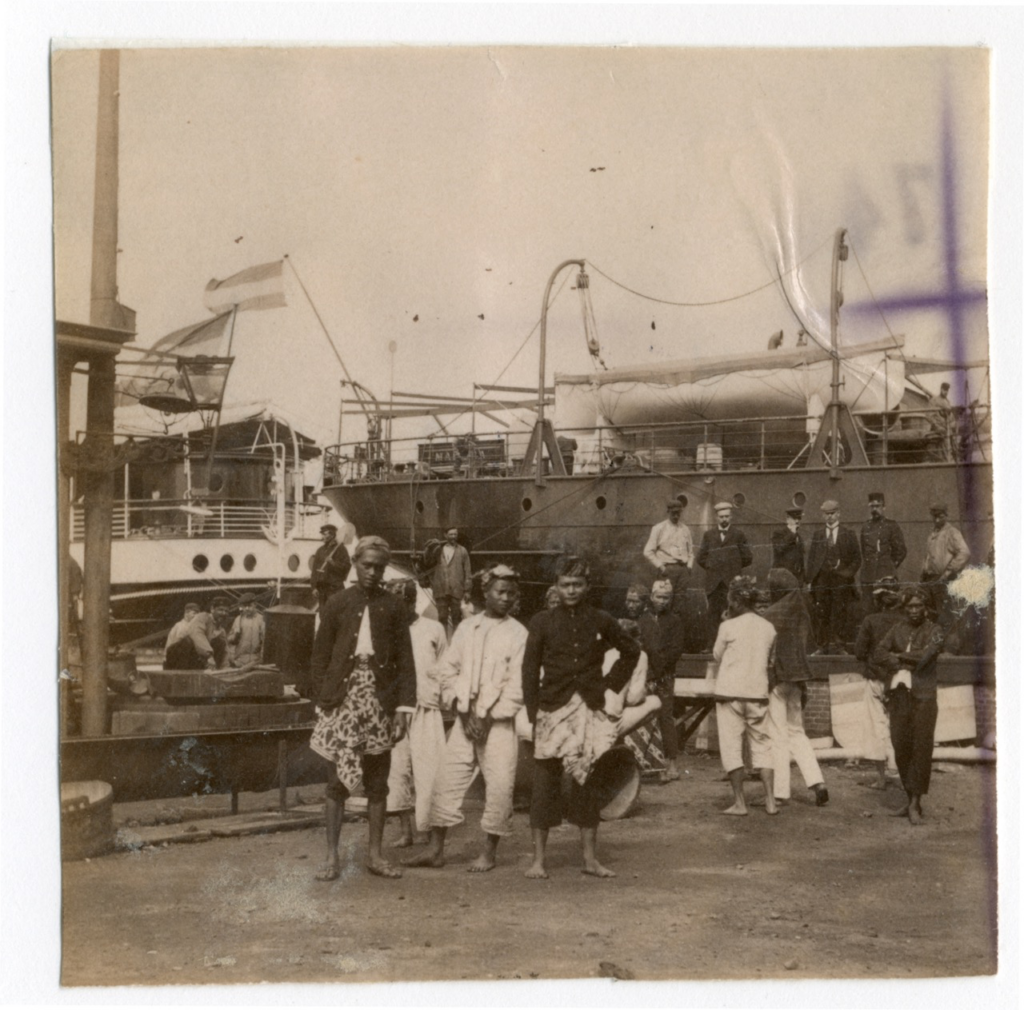
Bijna 25 jaar lang reisden in Java geronselde contractarbeiders niet rechtstreeks maar via Amsterdam naar Suriname, een lange reis met veel ontberingen. Tijdens hun korte verblijf in Nederland maakten de Javanen veel indruk.

Bijna 25 jaar lang reisden in Java geronselde contractarbeiders niet rechtstreeks maar via Amsterdam naar Suriname, een lange reis met veel ontberingen. Tijdens hun korte verblijf in Nederland maakten de Javanen veel indruk.
In 1745 koopt Alkmaarder Jacob Hengevelt een stuk grond aan de rivier de Commewijne in Suriname. Hierop wordt plantage Alkmaar aangelegd, waar vele honderden slaafgemaakte mensen en – na de afschaffing van slavernij – contractarbeiders werken. In 1893 wordt het gebied verkaveld voor kleine landbouwers. Begin twintigste eeuw richt een zendeling er een kinderhuis op, dat nog altijd bestaat.
Stedelijk Museum Alkmaar wijdt in 2022-2023 een tentoonstelling aan plantage Alkmaar, als eerste verkenning van het Alkmaarse slavernij verleden. De monumentale waterverfschilderingen van plantage-eigenares Louise van Panhuys, vervaardigd in 1811-1816, vormen hierin de rode draad.
Een bijzonder onderdeel is ook de serie portretten die kunstenaar Dimitri Madimin maakte van huidige bewoners van Surinaams Alkmaar, onder wie zijn grootmoeder. Dit boek bevat de verhalen en beelden uit de tentoonstelling en biedt daarmee een indringend portret van Alkmaar in Suriname, van 1745 tot nu.
Verkrijgbaar bij:
Only a few Jewish painters are known from 17th- and 18th-century Amsterdam. In 1637, Samuel d’Orta, ‘Portuguese painter’, bought an etching plate depicting Abraham’s repudiation of Hagar and Ishmael from Rembrandt. D’Orta bought it on condition that Rembrandt himself would not sell any more prints of it. In 1639, Abraham Mendes from Amsterdam was active, but no work by either man is known. Rembrandt’s friend and rival Jan Lievens had two Portuguese-Jewish pupils, Aron de Chavez and Jacob Cardoso Ribero, in 1669. De Chavez left for London in 1674, where he made a painting of Moses and Aaron and the Ten Commandments in 1675. It hung above the ark in the first Portuguese synagogue in that city on Creechurch Lane and is now in the 1701 Bevis Marks synagogue. In the late 17th century the Jacob Carpi arrived from Vernona. Jacob Carpi was active as painter in Amsterdam in the first half of the 18th century.
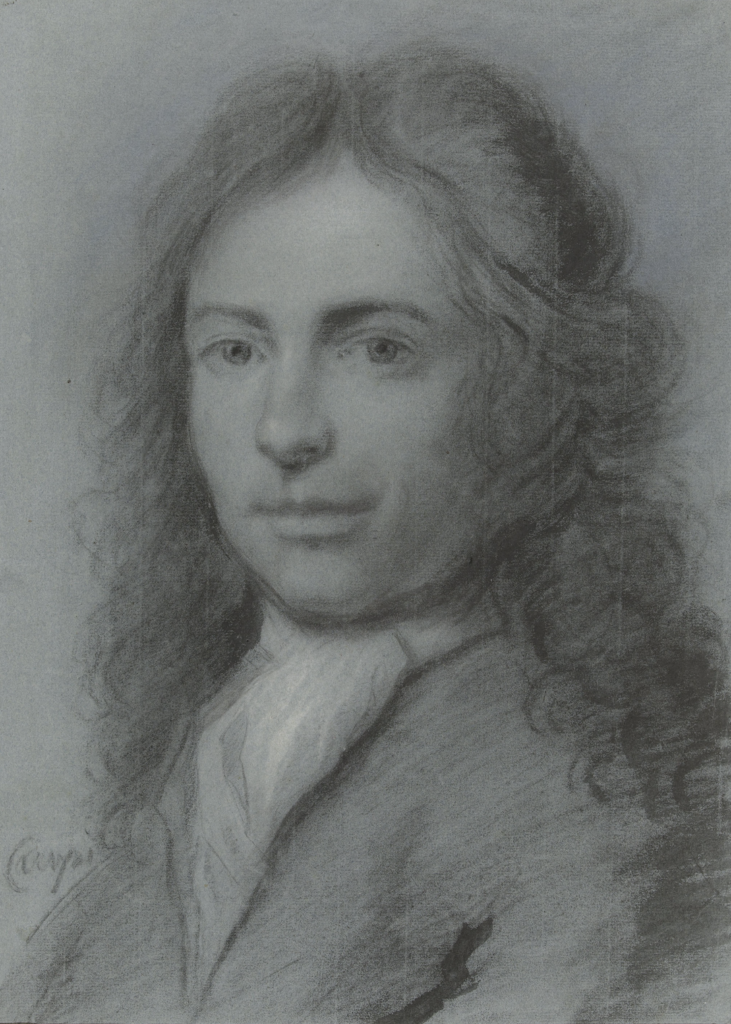
The Carpi family settled in Amsterdam in the late 17th century. Pater familias was Salomon Carpi. He had at least six children: Abraham, David, Moses, Belitje (Bella), Jacob and Colomba. Colomba married Moses Giron, a bookkeeper on Weesperstraat, in 1694, and Belitje married tobacco buyer Aaron Marsilie in 1698. Both men were from Padua in Italy, close to Venice. Carpi is a town in the province of Modena; Belitje and Colomba’s marriage announcements state that they were ‘from Verona’. No marriage is known of Solomon’s sons. Moses Carpi engaged in trade in precious fabrics and Jacob (also called Jacob da Carpi) was apprenticed to the Dordrecht portrait painter Arnold Boonen, who settled in Amsterdam around the same time. There he probably met young talents like Cornelis Troost and Jacob de Wit, who would later make a name for themselves in Amsterdam. Both would portray Jacob Carpi.
In the Rijksmuseum collection is a beautiful chalk drawing by De Wit of Carpi in the prime of his life, possibly drawn around 1720, and a print by Elisabeth van Woensel after a painting by Cornelis Troost from 1743, showing Carpi sitting on a chair with a pipe in his hand. That painting has been lost, or ended up in an unknown collection. Carpi would continue to call himself a ‘konstschilder’ (art painter) throughout his life, but no works by him are known. A posthumous drawing by Cornelis van Noorde mentions that he painted ‘Pourtraiten, Historien, etc.’, and was a great connoisseur and lover ‘of Papierkonst and Painting’.

As time went on, he concentrated on trading paintings, especially Italian and Flemish masters. Anyone browsing through Amsterdam newspapers of the 18th century regularly comes across a sale by Carpi. On 7 April 1734, the Oudezijds Heerenlogement auctioned ‘a cabinet of paintings, all of the first kind, among which is the renowned ‘Osse-Drift’ by Poulus Potter’, a painting possibly lost in the bombing of Dresden.
In 1737, Carpi valued the paintings in the estate of Maria Agnes Barbou, widow of Joan Occo. In her home at 584 Herengracht, he saw several works by Italian masters such as Raphael, Veronese, Titan and Michelangelo. The most expensive painting was The Adoring Dry Queen by Casper Crayer, estimated at 400 guilders. Carpi also found a ‘Leander’ by Rembrandt there – value 63 guilders, a painting not otherwise described anywhere. It is known that Rembrandt bought a Hero and Leander by Rubens in 1637 and sold it for a profit ten years later. It is possible that he himself made a painting with the same theme.
Financially, Carpi fared well. In 1746, this first generation migrant in Amsterdam bought a house and garden in the Nieuwe Plantage, behind the hortus, at auction for 1500 guilders. Here he not only took up residence and housed his own collection, but also held auctions and art sales. For instance, Carpi advertised in the Amsterdamsche Courant of 24 October 1750 that he had ‘uyt de hand’ all the prints for sale ‘by Raphaël d’Urbino, by Markantoio and Vensesiani’.
Physically, however, the painter suffered. This is evident from the signatures on several notarial deeds he signed in the last years of his life. When he drew up his will in 1746, he still had a reasonably steady hand, although it was already a lot less convincing that a decade earlier. In 1750, he drew up a new will ‘being somewhat unwell’. It is poignant to see that he apparently could no longer keep his hands still then. Two years later, the handwriting had deteriorated considerably. Was it arthritis? Or could he have had Parkinson’s disease?


Also in the last phase of his life, Carpi was drawn by Jacob de Wit, as an old frail man walking with a cane, supported by a woman. That will have been his housekeeper Bartha Holmer, whose name we know thanks to the 1750 will. Jacob Carpi was ten years apart from his colleague De Wit; they died shortly after each other. Jacob de Wit was buried in the Oude Kerk (Old Church) on 19 November 1754, aged 59; Jacob Carpi died two and a half months later at the age of 70. On 3 February 1755, he was buried at Beth Haim in Ouderkerk aan de Amstel.
Mark Ponte
Translation of: Mark Ponte, ‘Jacob Carpi, joodse kunstschilder in de 18de eeuw‘, Ons Amsterdam, 1 maart 2023.
About a decade ago I started researching Black Amsterdam in the 17th century. In the marriage registers I discovered a small but significant Black community.
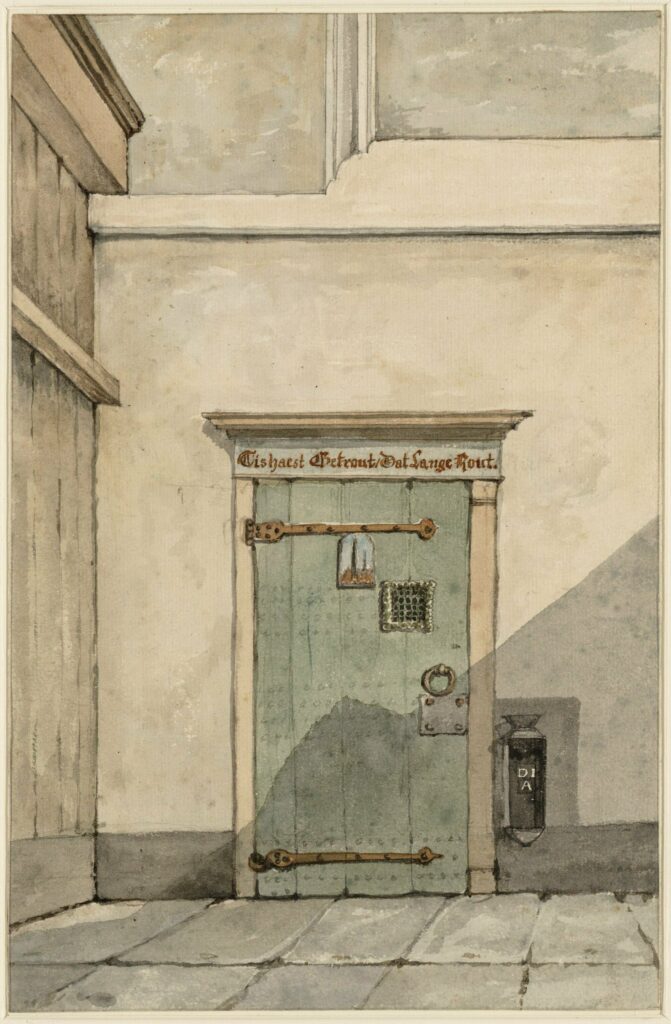
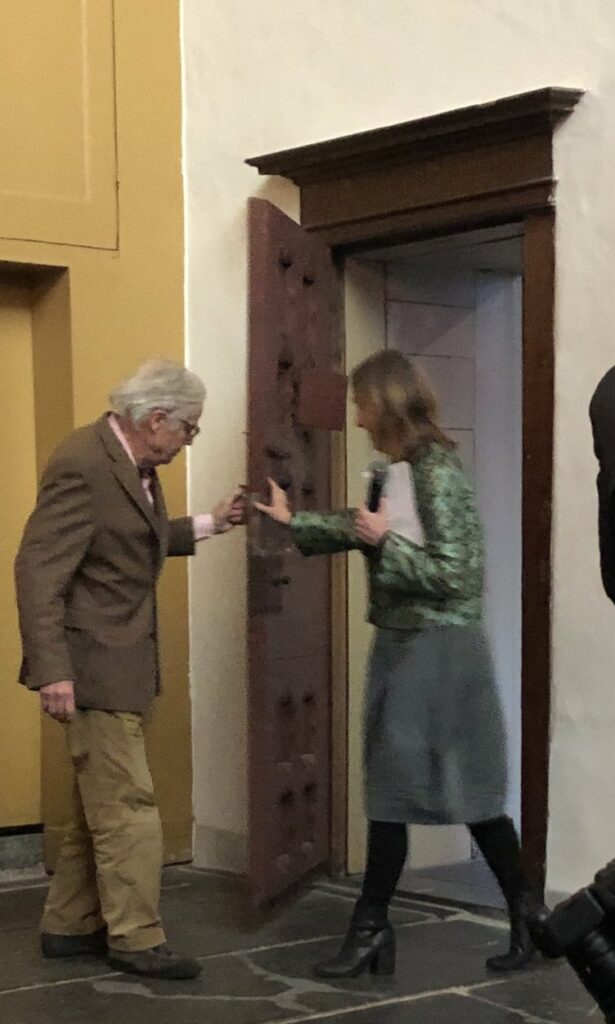
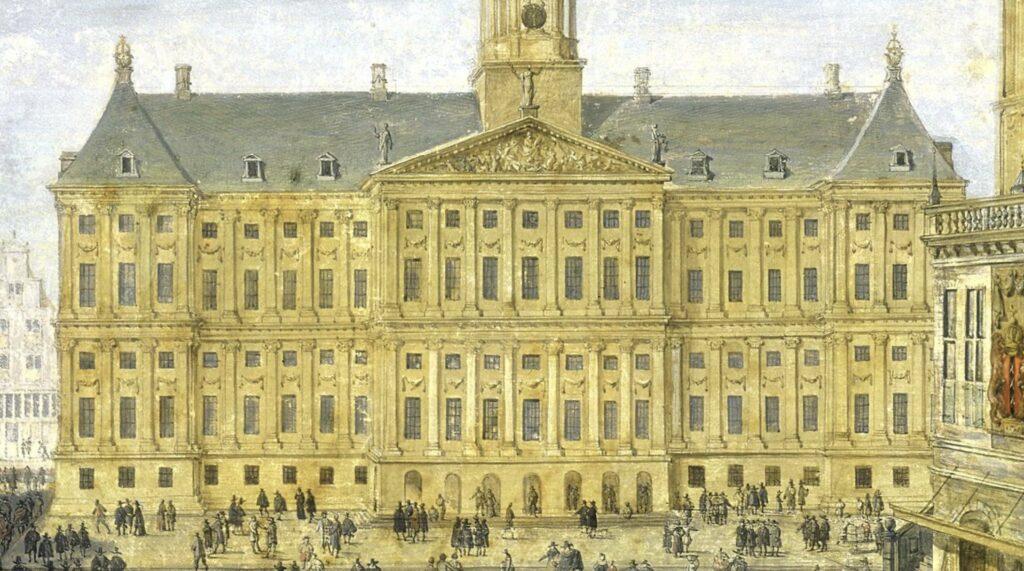
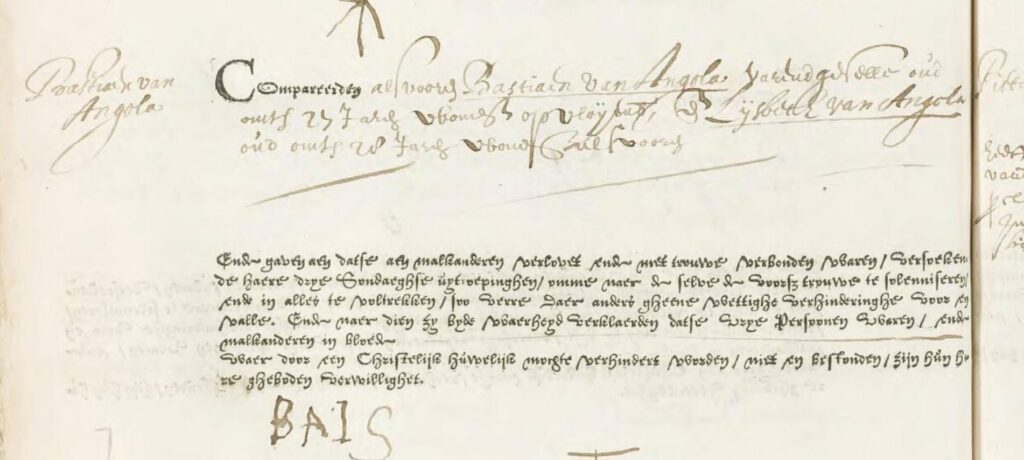
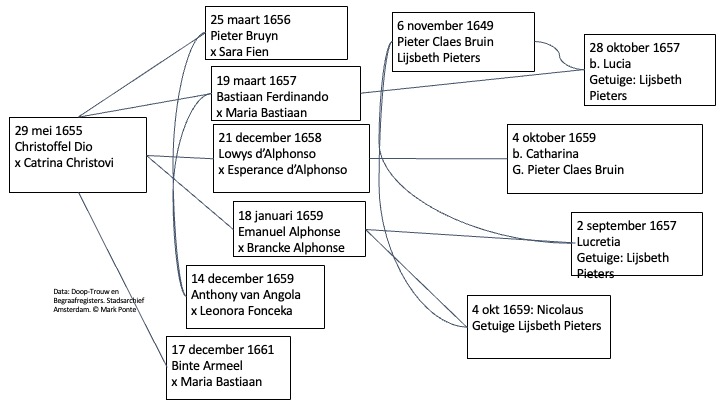
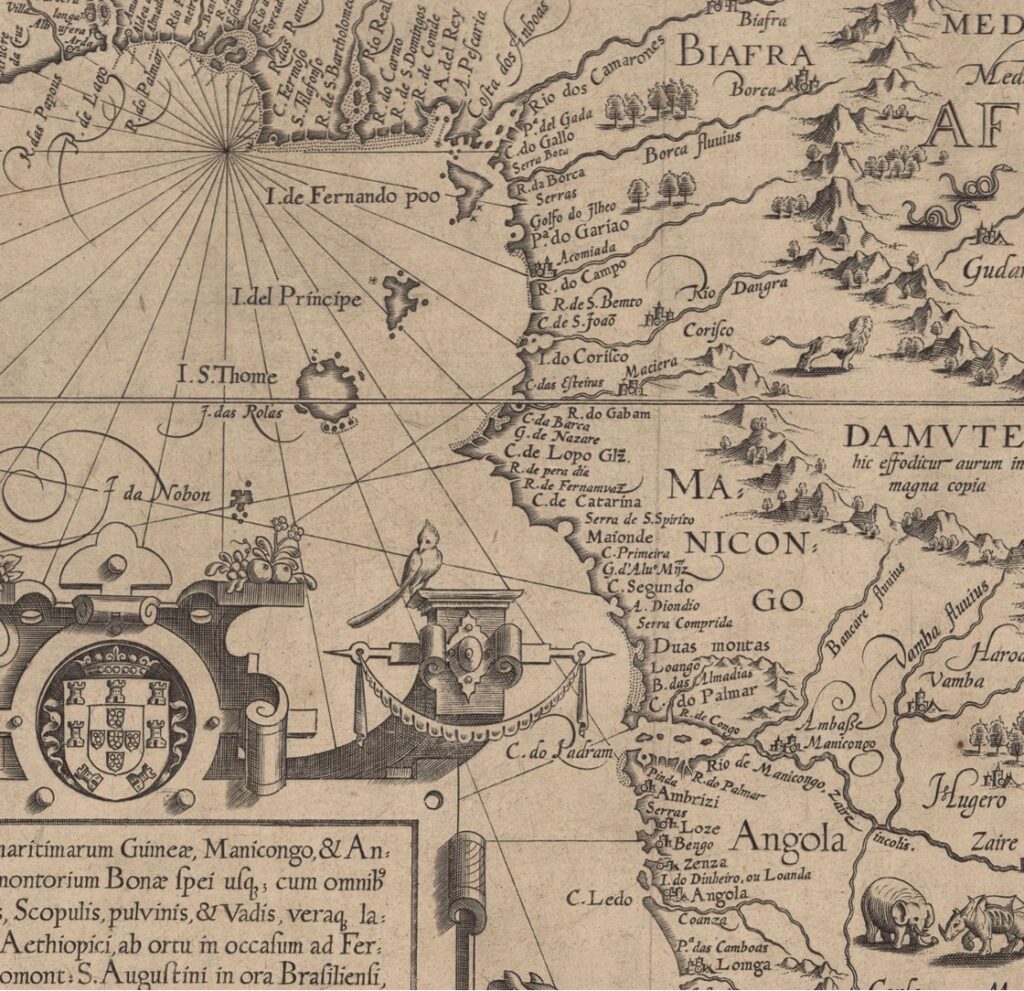
Yesterday ’the Mirror Room’ of the Old Church was reopened after restauration. Until 27 October 1656 everyone – rich or poor – who wanted to marry in the city of Amsterdam had to pass the ‘roodeur’ to the Mirror room to register their intend with the ‘commissioners of marital affairs’. (From 28 October 1656 onwards the registers were kept at the new city hall at ‘de Dam’ – Damsquare)
The first African couple – not the first Africans – to register their marriage there, were Bastiaan (27) and Lijsbeth (28) from Angola in 1616. In the decades afterwards tens of Black couples registered there marriages in the city. They came from Angola, Brazil, Cabo Verde, Portugal, Congo and other places across the Atlantic.
The Amsterdam marriage banns – that have been used widely for population and migration research – prove the intimate ties between the various Black families in Amsterdam in the mid 17th century. The lines on the fifth image show how they were related, as witnesses at marriage and baptisms.
Literature:
Mark Ponte, ‘Black in Amsterdam around 1650‘ in: Kolfin and Runia ed., Black in Rembrandt’s Time (W Books/Museum Rembrandthuis 2020) 44-61.
Mark Ponte, ‘Al de swarten die hier ter stede comen’ Een Afro-Atlantische gemeenschap in zeventiende-eeuws Amsterdam’, TSEG/ Low Countries Journal of Social and Economic History, 15(4), pp.33–62. DOI: https://lnkd.in/eEvRw32X
Mark Ponte
In 1656, the city of Amsterdam is more powerful than ever. The Republic has convincingly defeated England in the First Anglo-Dutch War and in 1655 the gigantic new City Hall is inaugurated. Merchants from all over the world come to the city to trade at Hendrick de Keijser’s renowned stock exchange. Some bring enslaved servants, not only merchants and ship captains from Dutch ‘colonies’ in South America and Indonesia, but also from the Mediterranean. Like Joan Elias, from Aleppo.
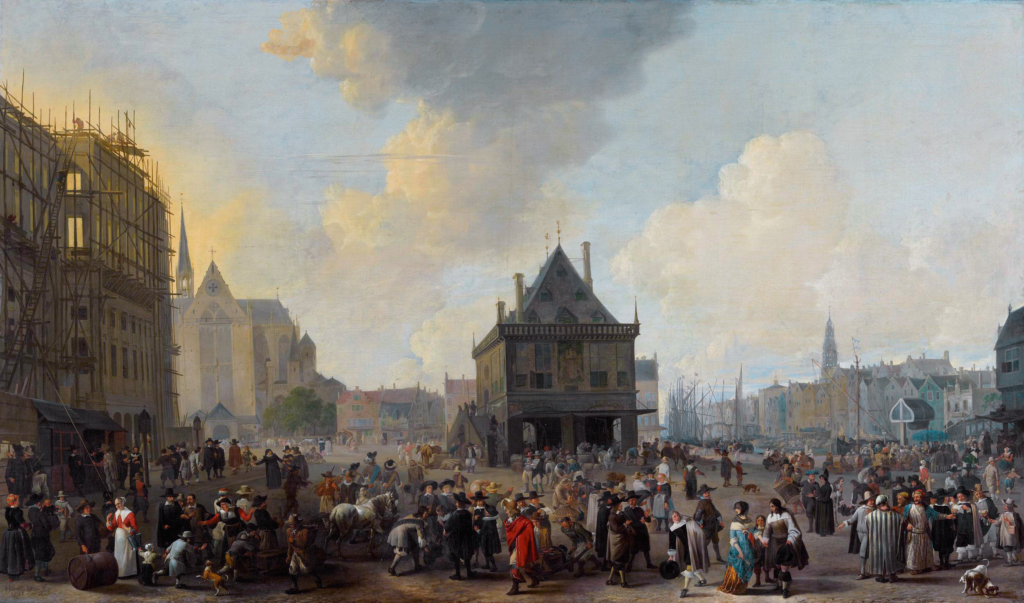
On Wednesday 22 November 1656, eighteen-year-old Huvedi Dimitri appears before Amsterdam notary Adriaen Lock in Warmoesstraat. Dimitri is originally Polish, but he has been living in slavery in Turkey for eight years. He does not speak Dutch. So Jan Pietersz (who signs as ‘Joao Pedro’) and Jurgen Pauwels are called in. Pietersz and Pauwels speak both Turkish and Dutch and act as interpreters. Furthermore, Magerdiets Aseroen, Caplaen Keijserlie and Mirse Sulfalie, ‘all Armenian merchants’, are present at the notary’s office.
In the presence of all these witnesses, Dimitri recounted that he had been enslaved in the Ottoman Empire for about seven years bevore he was sold for 140 ‘pieces of eights’ (Spanish sillver dollars) to merchant Joan Elias of Aleppo some 15 months ago in Smirna (now Izmir). Smirna was an important multicultural port city in the Ottoman Empire, Aleppo one of the most important cities of the Levant in the same Empire. The Syrian merchant had then brought the Polish boy with him to Amsterdam ‘and taken with him (…) to serve him’.
Huvedi Dimitri explained all this at the request of Joan Elias, the merchant who had bought him as a slave. What was behind this? Huvedi’s explanation shows that he heard that there was no such thing as slavery in the city of Amsterdam. He had spoken to the Greek merchant Augustus de Miter, ‘de welcke hem (…) wijs gemaeckt & geseijt heeft dat hier een vrij lant was’ (‘who made him (…) aware and told him that it is a free country here’) , and that he was therefore not obliged to stay with Elias, serve him, and leave with him back to Smirna, where Elias would thus sell him again (‘for slaef soude vercoopen’).
Augustus the Miter actually insisted that Dimitri should walk away. Whenever Dimitri was in the street doing a job for Elias, the Greek would address him, saying words like ‘wel lijt thou hijer noch? Het gaet tegens de winter, gaet van uw meester wech’ (‘what lijt thou still here. It’s almost winter, go away from your master’). The Miter was even willing to give Dimitri 15 rijksdaalders to travel back to his family in Poland. But instead of running away, Dimitri had apparently told – or had to tell – Joan Elias everything.
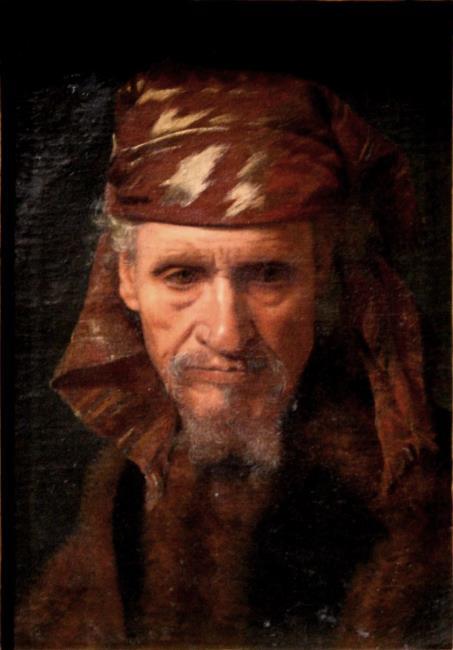
A day later, De Miter and Dimitri met in the street, De Miter dragging the enslaved Pole ‘with force’, Dimitri later states, to the Roman Catholic church, perhaps the house ‘Moyses’ in Jodenbreestraat. There he had ‘ses kaerssen (…) doen opsteecken & den priester het Nieuwe Testament gegeven’, upon which Dimitri, ‘after everything had been interpreted to him, lied by hand and declared by oath to be true’.
On Saturday 25 November 1656, a few days after the first declaration, all of them, with the exception of Sulfalie, returned to notary Lock’s office. After Augustus de Miter had heard of the statement made earlier, he said in the presence of the witnesses that he was willing to reimburse all the expenses Elias had incurred if Huvedi Dimitri confirmed the whole story to a priest under oath. That was why he had dragged Dimitri to the church.
Apparently, Joan Elias was quite willing to let Huvedi Dimitri go, but wanted to be fully reimbursed for the expenses he had incurred, including the amount he had paid in Smirna to buy the boy.
Remarkably, this was the second time that month that Adriaan Lock’s notary office had a case about slavery. At the beginning of the month, Portuguese merchant Eliau Burgos explained that the enslaved Juliana he had brought from Brazil and now wanted to take to Barbados had run away from him. She too had heard from other Amsterdammers that she was free here: ‘others who made her wise that she was free & unrestrained to serve him (…)’. Juliana decide to leave and do what she had heard and had run off, never to return to Burgos (see Ons Amsterdam, July 2020).
Both deeds make it clear that it must have been fairly common knowledge in Amsterdam that slavery was not allowed in the city. Whether Nicolaes de Miter actually allowed Dimitri to travel back to Poland is not known, but another declaration, with another notary, has been found. In it, the same Joan Elias from Aleppo declares ’to set his slaeff again in freedom (…) relieving him of all servitude & slavery’. It looks like poor Dimitri obtained his freedom in Amsterdam after all.

How to cite: Mark Ponte, ‘Leave your master’, an Enslaved Polish man in Amsterdam (1656)’, voetnoot.org, 8 Februari 2023; Translation of: Mark Ponte, ‘Gaet van uw meester wech’, Ons Amsterdam, februari 2023.
Published in: ‘Black in Rembrandt’s Time’, 2020.
In the archives, we often stumble across fragments of human lives: declarations, authorizations, or contracts that demonstrate the existence of a person otherwise absent from the historical record. Many thousands of Amsterdam men took to the sea in the service of the Dutch East India Company (VOC), Dutch West India Company (WIC), or merchant marine. This undoubtedly also applies to black Amsterdammers. Some of them probably never visited a public notary or served as a godparent at a baptism. For a few of them, some traces of their lives have been preserved. A case in point is the married couple Lijsbeth Pieters of Angola and Pieter Claesz Bruijn of Brasil.

Shortly before four o’clock on 23 March 1640, Pieter Claesz Swart of Brasil entered the office of Henrick Schaeff, behind WIC headquarters on Haarlemmerdijk, accompanied by Willem de Keijser of Middelburg. Schaeff was both a notary and a clerk for the WIC, and the boundary between his two roles was often blurred. Thousands of sailors on the verge of departing for the Atlantic region – territories ranging from West Africa and Brazil to New Amsterdam and North America – visited him for various purposes, such as signing letters of debt to the many local innkeepers, thus pledging away much of their pay. Both Pieter and Willem worked for the WIC, and they had accumulated debts of 50 and 100 guilders respectively to Jan Pietersz Santdrager and his wife Anna Jansz in Amsterdam.
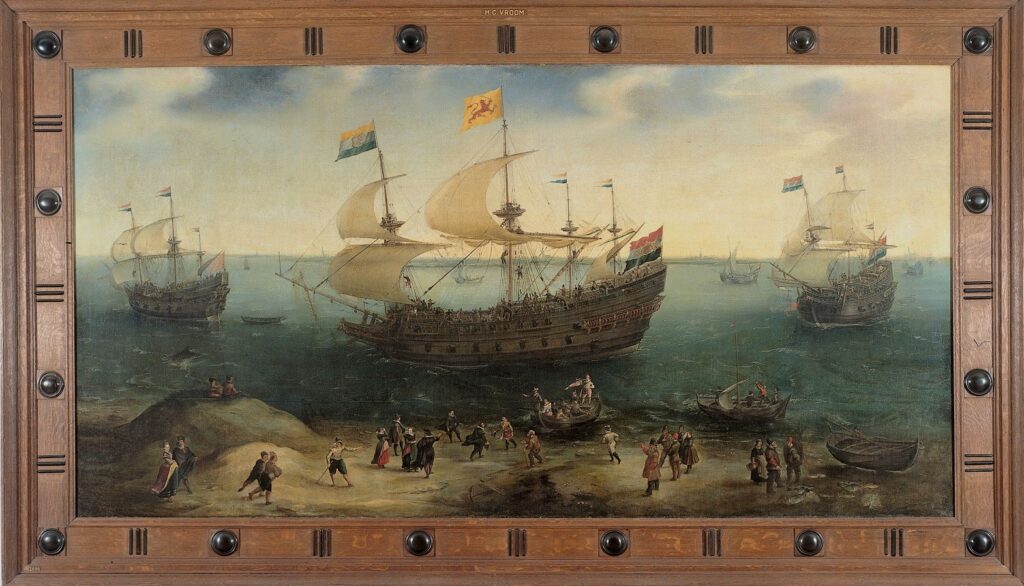
Pieter Claesz Swart was a man of colour. He was a bosschieter – an able seaman – from Brazil, and in 1640 he was about to embark on a new voyage on the WIC yacht Goerree. One of the two notarial deeds that Pieter Claesz signed that day describes him as speaking the Dutch language proficiently. Four years later, Pieter Claesz was back in Amsterdam, where he again accumulated a debt to the keeper of a hostelry in the Jordaan district, this time amounting to no less than 124 guilders, easily a year’s salary for a seaman. This time, interestingly, he is referred to as Peter Claesz Bruijn van Brazilië. (Swart means ‘Black’ and Bruijn means ‘Brown’.) This is the name under which he was later known. In January 1644, he went to sea again, this time on the WIC vessel Mauritius.
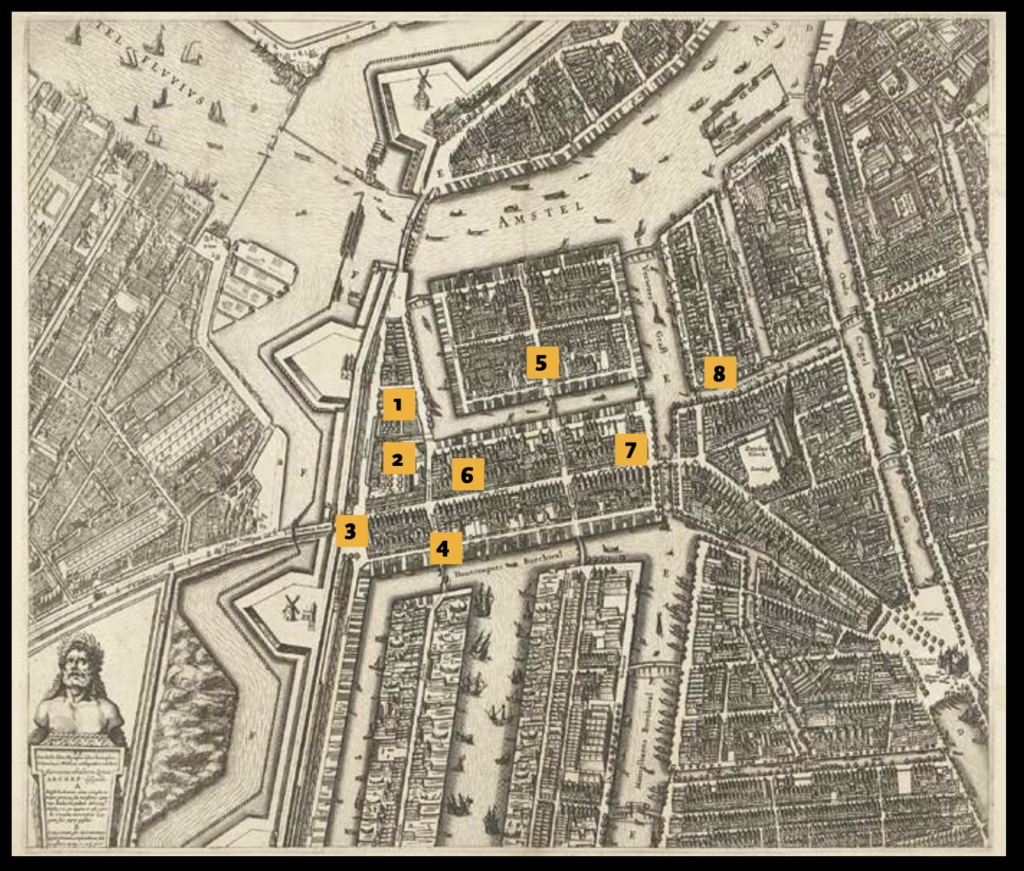
At that time, Pieter Claesz was not yet in touch with the small black community around Jodenbreestraat. He accumulated his debts in inns for white people, and the witnesses to his notarial deeds were white. By the late 1640s and 1650s, this situation had changed. In November 1649, when Pieter Claesz was 44 years old, he registered to marry to Lijsbeth Pieters of Angola, whom the notarial deed listed as living in Jodenbreestraat. He probably moved in with her. It is not clear whether he returned to sea after that or remained in Amsterdam. What we do know is that he was in Amsterdam in 1659. In August and October he was a witness to the baptisms of black children in the Catholic house church in the Huis Moyses in Jodenbreestraat. The first of these children, Pieter – undoubtedly named after Pieter Claesz – was the son of Alexander van Angola and Lijsbeth Dames. The second child – Catharina – was the daughter of Louis and Esperanza Alphonse. That same day, Nicolaus, the son of Emanuel and Branca Alphonse, was also baptized. The witness was Lijsbeth Pieters. She had also acted as a witness a few years earlier, in 1657, at the baptism of that couple’s first child Lucretia, as well as for Lucia, the daughter of Bastiaan and Maria Ferdinandes. These are all names of people from the small black community in and around Jodenbreestraat, of which Pieter and Lijsbeth had become important members.
How to cite: Mark Ponte, ‘Pieter Claesz Bruijn and Lijsbeth Pieters’, in: Elmer Kolfin and Epco Runia ed., Black in Rembrandt’s Time, W Books / The Rembrandt House Museum, Amsterdam 2020, 60-61.
Never a dull moment at the tobacconists in Jodenbreestraat. Last year I wrote about a clash between Portuguese and Armenians in the cellar next to Rembrandt on 2 July 1655. A year later on 3 May 1656, there was another brawl.
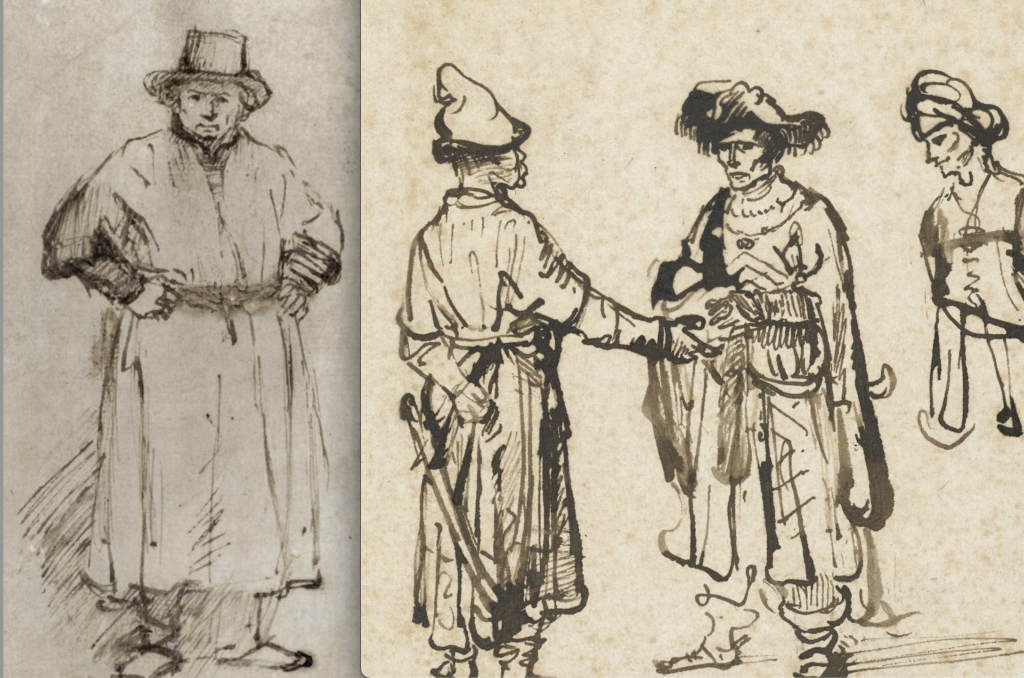
On 4 May 1656, Morchechay and Abraham de Andrade, and Isaque and Abraham Rodrigues were in a tobacco shop on Breestraat talking to a man called Moises, when the latter was suddenly attacked with a knife by a certain Malachi. Moises was hit on his forehead. Malachi was arrested.

This fight probably also happened in the shop of Rembrandt’s neighbour Daniel Pinto. Mordechay D’Andrade worked for Pinto. For instance, he was supervisor of the carpentry work at Rembrandt and Pinto’s houses in 1654. Isaque Rodriges was the son-in-law of Rembrandt’s other neighbour Salvador Rodrigues, who had died in 1654.
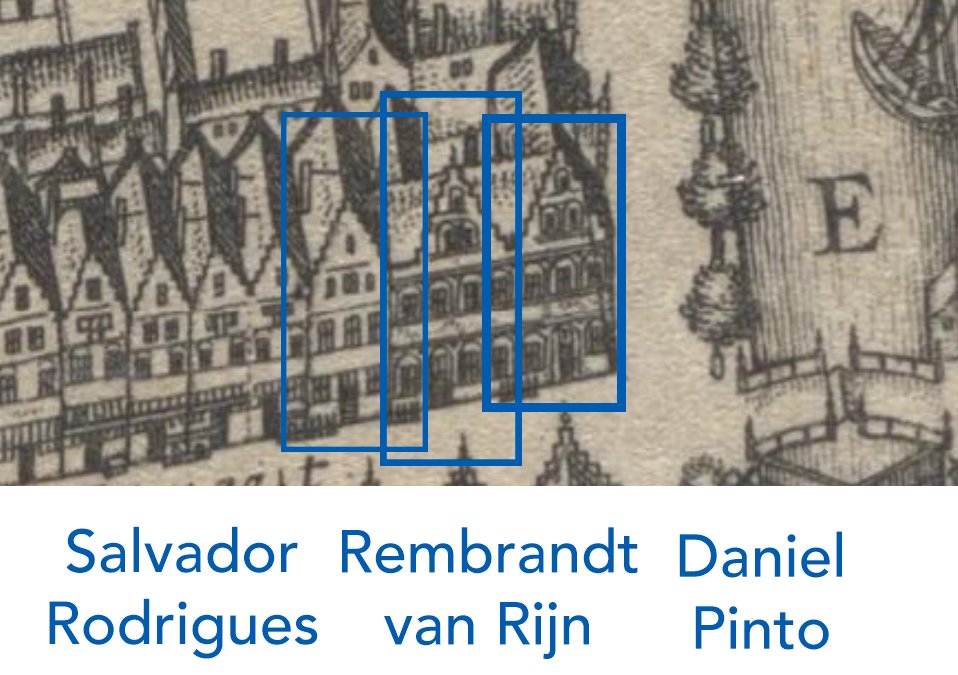
Mijn eerst grote tentoonstelling Plantage Alkmaar. Alkmaar in Suriname 1745-heden is van 26 november 2022 t/m 19 maart 2023 te zien in Stedelijk Museum Alkmaar. Met aquarellen van Louise van Panhuys, foto en film door Dimitri Madimin, diorama’s van Gerrit Schouten, kaarten, archiefmateriaal, een tekening van Frans Post en meer.
In het @MuseumAlkmaar kunt u vanaf vandaag de tentoonstelling ‘Plantage Alkmaar’ over het Alkmaarse slavernijverleden bekijken. Met waterverftekeningen van Louise van Panhuys, dioramas van Gerrit Schouten, film en foto’s van Dimitri Madimin, werk van Frans Post & van Everdingen. pic.twitter.com/NGJFjacj7G
— Mark Ponte (@voetnoot) November 26, 2022
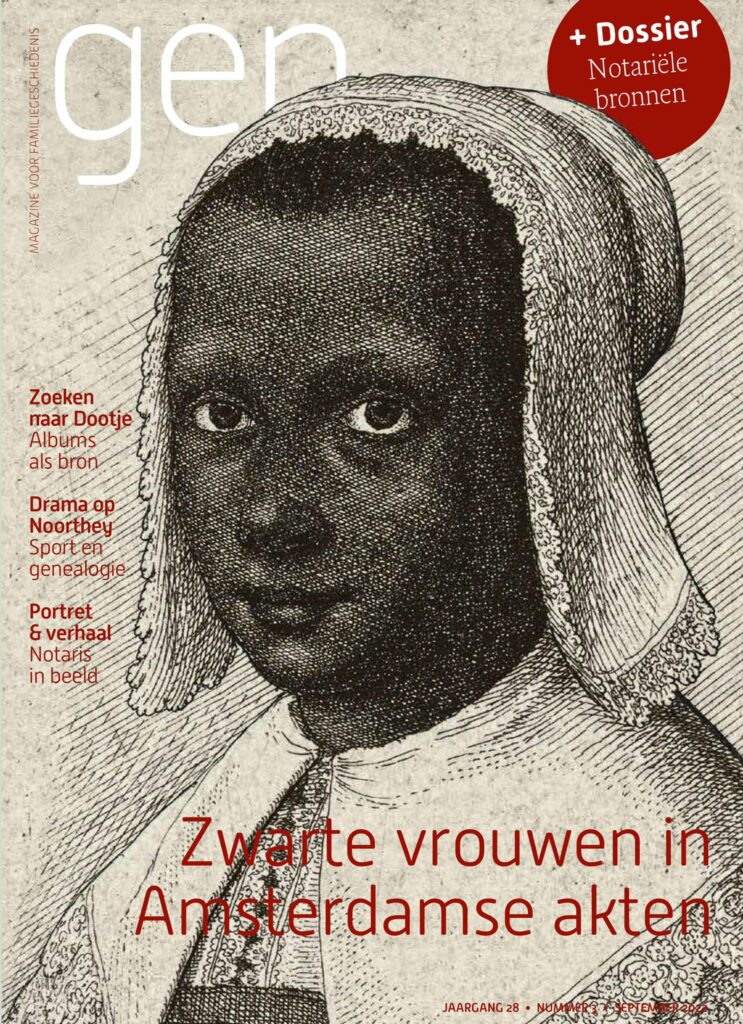
Later dit jaar verschijnt een langere versie in Jaarboek Amstelodamum:Alle Amsterdamse Akten. Ruzie, rouw en roddels bij de notaris, 1578-1915.
AMSTERDAMSE AKTEN • 1 juni 2022 • Door Maarten Hell en Mark Ponte
In de 18de eeuw stonden enkele Surinaamse tapsters achter de toog in Amsterdam, zo blijkt uit de administratie van het Spinhuis. De vrouwen probeerden met drankverkoop en het aanbieden van logies het hoofd boven water te houden.
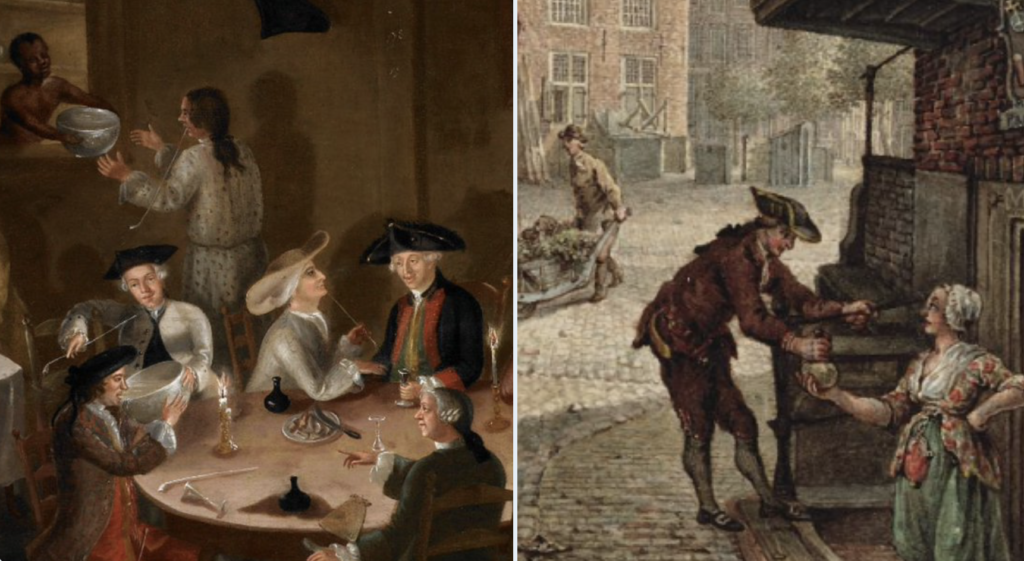
‘Over de veertien honderd tappers’ telde Amsterdam in de tweede helft van de 18de eeuw, zo becijferde de anonieme auteur van de roman Ongelukkige levensbeschrijving van een Amsterdammer uit 1775. Als frequent en fervent bezoeker van de stedelijke stamtafels maakte hij daarmee een correcte inschatting van het toenmalige drankhuizenbestand. In diezelfde roman klaagt een nukkige grijsaard dat er ‘geen negotie [is] waar wat winning op is, of het is in handen van vreemdelingen, zoals het geval is bij de zielverkopers, tappers, logementhouders, tabakskopers’.